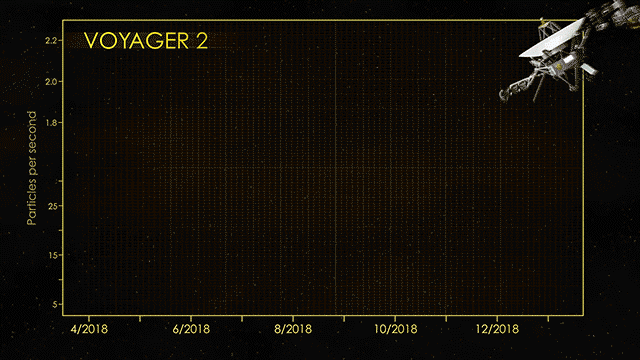For the second time in history, after 41 years on the road, NASA’s Voyager 2 spacecraft has finally reached interstellar space. NASA has confirmed that Voyager 2 exited the heliosphere which is the protective bubble of particles and magnetic fields created by the Sun.

Earlier in 2012, its twin, the Voyager 1 crossed a different path of this boundary but Voyager 2 that carried a working instrument that will provide first of its kind observations of the nature of this gateway into the interstellar space.
We are all happy and relieved that the Voyager probes have both operated long enough to make it past this milestone, Suzanne Dodd, the Voyager project manager from NASA’s Jet Propulsion Laboratory said.
Mission operators can still communicate with the Voyager 2, which is now slightly more than 11 billion miles (18 billion kilometers) from the Earth.
“This is what we’ve all been waiting for. Now we’re looking forward to what we’ll be able to learn from having both probes [in interstellar space],” Ms. Dodd said in a statement. Both spacecraft are still in regular contact with NASA‘s Deep Space Network (DSN) ground stations, including Australia.
Unlike Voyager 1, Voyager 2 has instruments set up that measure changes in the speed and direction of high energy plasma particles as the wind from our Sun meets the high energy particles streaming in from the rest of the galaxy.
The energy streaming from our own Sun is literally like a wave around the solar system, Glen Nagle of the Canberra Deep Space Communication Complex said.
- It’s the same way as a ship cutting through water creates a bow shock wave around it.
- The Voyager spacecraft are now ahead of that wave in the clear air of interstellar space.
- “Voyager 2 seems to have entered that region about 18 billion kilometers from the Sun.
Voyager 2 was launched on August 20 1977 — 16 days before its twin Voyager 1 — making it the oldest space mission.
“Its mission was to go and visit the giant planets of the solar system Jupiter, Saturn and of course eventually Uranus and Neptune,” Mr. Nagle said.
Nobody really expected the spacecraft to last this long, to be able to continue out on their journey, to travel through the heliosheath boundary, out across the heliopause into interstellar space,” It is the only spacecraft to have flown by Uranus, in 1986, and Neptune, in 1989.
Mr. Nagle said the tracking stations were talking to Voyager 2 for about 15 hours a day.”The spacecraft no longer has a working recorder on board so it is continuously streaming back that information,” the spacecraft had enough power to run science instruments until 2025.
